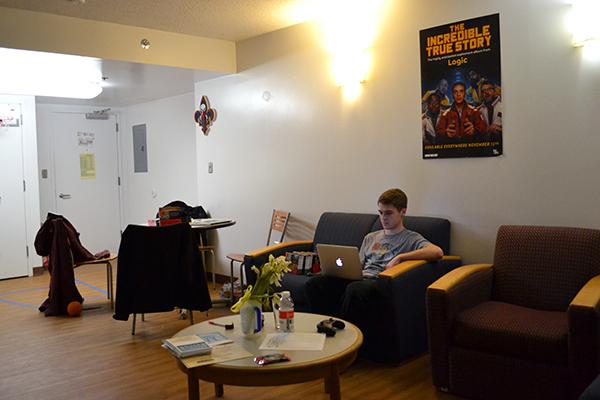GW is shining a light on a potential cost-saving measure that could also be good for the environment.
This year, the University is testing out new LED light bulbs in one room in Amsterdam Hall and monitoring how much energy is saved by using them. Officials said the lights will also be used in a majority of District House when it opens in the fall as they try to make the building one of the most eco-friendly on campus.
LED light bulbs are more expensive initially than fluorescent bulbs, but last longer and are less costly to operate in the long term.
Andy Ludwig, the project manager for energy and environmental projects, said in an email that Amsterdam served as “an ideal pilot location” because the building has individualized room meters, so officials can monitor energy savings most closely.
Ludwig said Gelman Library, Monroe Hall, the law school, Mitchell Hall, Strong Hall, 1959 E Street and Potomac House also have LED lights.
“GW has LEDs in many areas on campus, including parking garages and hallways, many of which operate 24 hours a day, to maximize energy savings and support sustainability,” he said.
The U.S. Department of Energy estimates that a 12-watt LED bulb lasts for 25,000 hours, as compared to 10,000 for a 15-watt compact fluorescent bulb. The LEDs have an energy cost of about $1 per year, while CFLs cost $1.20 per year.
Sustainability has been a major priority under University President Steven Knapp: The University committed to being carbon neutral – meaning that it would have a net-zero carbon footprint – by 2040 and officials introduced a sustainability minor in the fall of 2013.
In 2012, GW signed on to the District of Columbia Mayor’s College and University Sustainability Pledge. The pledge requires the University to achieve LEED silver in all new construction projects, generate at least 10 percent of energy from renewable sources and use tap water instead of bottled, among other eco-friendly efforts.
The Science and Engineering Hall, as well as South Hall and the Milken Institute School of Public Health building, are among GW’s 15 LEED certified buildings.
Junior Ali Belinkie, who lives on the sixth floor of Amsterdam, said she received an email from GW Housing early last semester asking if she would accept her room being the pilot room for the new lights. She said she was also asked to provide feedback to the University as part of the pilot program.
Belinkie said she didn’t initially notice anything different about the new lights, but as she spent more time in friends’ rooms, she came to like the experimental lighting in her own dorm better. She said that while the standard bulbs give off a slightly yellow light, the LED lighting is more of a white light that isn’t as harsh.
“It doesn’t make my eyes tired when I stay up all night,” Belinkie said. “We had to put in FixIT requests for at least half of the lights in our room last year, but none of the LEDs have died yet.”
GW’s peer schools have also made similar efforts to introduce energy-efficient lighting on their campuses. Boston University has replaced 26,000 fixtures with LEDs since 2011 and American University uses LEDs to light outdoor pathways, a parking garage and its main student center.
Sophomore Dylan Williams, who also lives in Amsterdam with Belinkie, said he was happy to let the University use his room for the pilot program.
“They pitched it as, ‘Hey, we’re trying this out to see if, in the future, it can help reduce costs,’” Williams said. “That’s what made me OK with it.”







